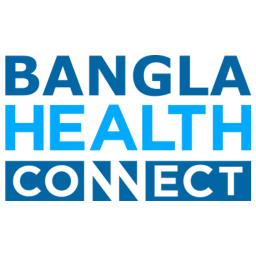Guide to the Indian Healthcare System for Bangladeshi Medical Tourists

Travelling to India for medical treatment? Here’s what you need to know about the Indian healthcare system.
Many people from Bangladesh go to India for medical treatment. In fact, more than half of all the foreign patients in India are from Bangladesh. The number of Bangladeshi patients travelling to India has increased by 83% since 2018 to 2021. They choose India because it offers good medical care at lower prices, making it a popular choice for those needing treatment.
Public vs. Private Healthcare in India
In India, healthcare is divided into two sectors: public and private. The public sector provides services at minimal cost but often has long wait times and variable quality. The private sector offers quicker access and better facilities but at higher prices. For most Bangladeshi patients, private hospitals in cities like Chennai, Mumbai, and Delhi are preferred due to their advanced facilities and the availability of specialized treatments. Notably, more than three-fourths of Bangladeshi medical tourists choose these hospitals for treatments, particularly in cardiology and cancer, highlighting the country's advanced medical facilities and skilled professionals.
Healthcare Tiers
India's healthcare system is tiered into primary, secondary, and tertiary care:
- Primary Care: These are the first point of contact facilities, including clinics and general doctors.
- Secondary Care: Provided by specialists in hospitals following a referral from primary care.
- Tertiary Care: These are specialist consultative healthcare, typically for inpatients and on referral from primary or secondary medical care personnel.
Understanding these levels helps in better planning your medical journey.
.png)
.png)
Popular Cities for Medical Treatments
Cities like Chennai, Delhi, and Kolkata are hubs for Bangladeshi patients due to the concentration of high-quality hospitals. For instance, Apollo Hospitals, particularly in Chennai, are renowned for their cardiac and orthopaedic care, attracting patients from across the globe.
Notable Hospitals and Accreditation
Choosing an accredited hospital is crucial. Accreditation such as NABH (National Accreditation Board for Hospitals & Healthcare Providers) or JCI (Joint Commission International) ensures the hospital meets high-quality standards. Hospitals like Apollo, Fortis, and Max Healthcare are popular choices among Bangladeshi patients.
Meaning of Accreditations
Hospital accreditations like NABH and JCI signify adherence to international healthcare standards, ensuring high-quality care and patient safety. Always check the hospital’s accreditation status before proceeding with treatment.
.png)
Checking Credentials
It’s important to verify the credentials of both the hospital and the attending physician. Websites of accredited hospitals typically list detailed profiles of their medical staff.
Regulations for Foreign Patients
International patients must navigate certain legalities:
- Medical Visa: Required for patients and their accompanying relatives. This government resource provides all details.
- Registration: Patients need to register at the Foreigner’s Regional Registration Office within 14 days of arrival.
Visa Process
Securing a medical visa involves presenting proof of appointment from a recognized hospital and financial proof for covering medical expenses. Learn more on how to apply your Indian Medical visa from Bangladesh
Expense Breakdown
The cost of treatment in India can vary widely depending on the hospital and type of treatment. Private healthcare, while more expensive, typically offers quicker and more personalized care. Many hospitals provide transparent cost estimates on their websites.
Payment Methods
Most hospitals accept various payment methods including cash, credit cards, and wire transfers. Some also offer payment plans and can assist with insurance claims.
Conclusion
Understanding the Indian healthcare system can greatly enhance your treatment experience. Planning ahead and choosing the right hospital and care level will ensure a smoother medical journey.
.png)
FAQs
What is the best time to travel to India for medical treatment?
During winter, from November to February, the weather is more favourable.
How can I communicate if I don’t speak Hindi?
Many hospitals provide translators and most medical staff speak English.
Are there facilities for relatives to stay nearby?
Most major hospitals have tie-ups with nearby hotels and guest houses offering special rates for patients’ families.












.png)
.png)
.png)